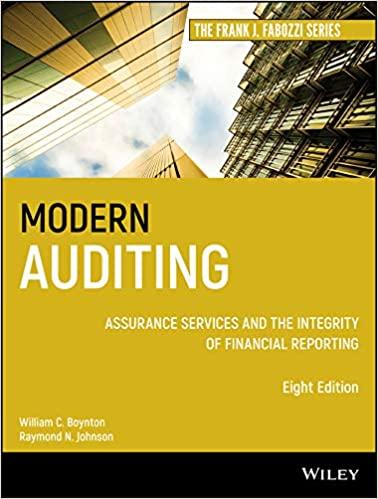Please show work possible. Thank you very much.






2020 Tax Rate Schedules Individuals Schedule X-Single If taxable income is over: But not over: $ 0 $ 9,875 $ 9,875 $ 40,125 $ 40,125 $ 85,525 $ 85,525 $163,300 $163,300 $207,350 $207,350 $518,400 $518,400 The tax is: 10% of taxable income $987.50 plus 12% of the excess over $9,875 $4,617.50 plus 22% of the excess over $40,125 $14,605.50 plus 24% of the excess over $85,525 $33,271.50 plus 32% of the excess over $163,300 $47,367.50 plus 35% of the excess over $207,350 $156,235 plus 37% of the excess over $518,400 Schedule Y-1-Married Filing Jointly or Qualifying Widow(er) If taxable inc ne is over: But not over: The tax is: $ 0 $ 19,750 10% of taxable income $ 19,750 $ 80,250 $1,975 plus 12% of the excess over $19,750 $ 80,250 $171,050 $9,235 plus 22% of the excess over $80,250 $171,050 $326,600 $29,211 plus 24% of the excess over $171,050 $326,600 $414,700 $66,543 plus 32% of the excess over $326,600 $414,700 $622,050 $94,735 plus 35% of the excess over $414,700 $622,050 $167,307.50 plus 37% of the excess over $622,050 Schedule Z-Head of Household If taxable income is over:But not over: The tax is: $ 0 $ 14,100 10% of taxable income $ 14,100 $ 53,700 $1,410 plus 12% of the excess over $14,100 $ 53,700 $ 85,500 $6,162 plus 22% of the excess over $53,700 $ 85,500 $163,300 $13,158 plus 24% of the excess over $85,500 $163,300 $207,350 $31,830 plus 32% of the excess over $163,300 $207,350 $518,400 $45,926 plus 35% of the excess over $207,350 $518,400 $154,793.50 plus 37% of the excess over $518,400 Schedule Y-2-Married Filing Separately If taxable income is over:But not over: The tax is: $ 0 $ 9,875 10% of taxable income $ 9,875 $ 40,125 $987.50 plus 12% of the excess over $9,875 $ 40,125 $ 85,525 $4,617.50 plus 22% of the excess over $40,125 $ 85,525 $163,300 $14,605.50 plus 24% of the excess over $85,525 $163,300 $207,350 $33,271.50 plus 32% of the excess over $163,300 $207,350 $311,025 $47,367.50 plus 35% of the excess over $207,350 $311,025 $83,653.75 plus 37% of the excess over $311,025 Emily, who is single, has been offered a position as a city landscape consultant. The position pays $143,000 in cash wages. Assume Emily has no dependents. Emily deducts the standard deduction instead of itemized deductions, and she is not eligible for the qualified business income deduction. (Use the tax rate schedules.) (Round your intermediate calculations and final answer to the nearest whole dollar amount.) a. What is the amount of Emily's after-tax compensation (ignore payroll taxes)? Description Amount $ 0 (1) Gross income (2) For AGI deductions (3) Adjusted gross income (4) Standard deduction (5) Taxable income (6) Income tax liability After-tax compensation $ 0 b-1. Suppose Emily receives a competing job offer of $135,000 in cash compensation and nontaxable (excluded) benefits worth $8,000. What is the amount of Emily's after-tax compensation for the competing offer? Amount $ 0 Description (1) Gross income (2) For AGI deductions (3) Adjusted gross income (4) Standard deduction (5) Taxable income (6) Income tax liability Total after-tax compensation $ 0 Jasper and Crewella Dahvill were married in year 0. They filed joint tax returns in years 1 and 2. In year 3, their relationship was strained and Jasper insisted on filing a separate tax return. In year 4, the couple divorced. Both Jasper and Crewella filed single tax returns in year 4. In year 5, the IRS audited the couple's joint year 2 tax return and each spouse's separate year 3 tax returns. The IRS determined that the year 2 joint return and Crewella's separate year 3 tax return understated Crewella's self-employment income, causing the joint return year 2 tax liability to be understated by $13,900 and Crewella's year 3 separate return tax liability to be understated by $8,250. The IRS also assessed penalties and interest on both of these tax returns. Try as it might, the IRS has not been able to locate Crewella, but they have been able to find Jasper. (Leave no answer blank. Enter O if applicable.) a. What is the maximum amount of tax that the IRS can require Jasper to pay for the Dahvill's year 2 joint return? Amount of tax b. What is the maximum amount of tax that the IRS can require Jasper to pay for Crewella's year 3 separate tax return? Amount of tax












